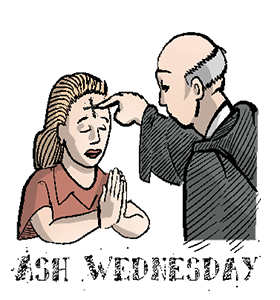Ash Wednesday
Ash Wednesday Quick Facts in the EU
| HashtagsCompiled on | #AshWednesday |
|---|---|
| Related Hashtags | #Lent |
| 2026 Date | 18 February 2026 |
| 2027 Date | 10 February 2027 |
2026 Holidays & Dates - EU
| EU Country Common Holidays | ||
| EU Country National Holidays | ||
| Christian Holidays |
› | ||
